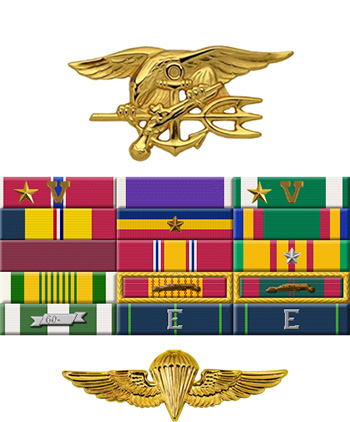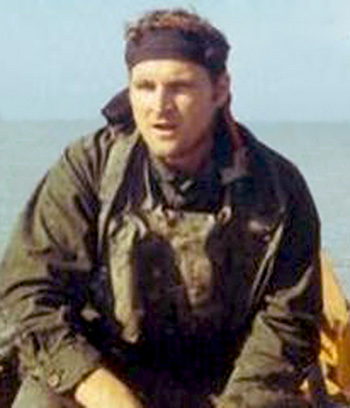
|
Lester J. Moe |
 |
|||
| Rank, Service | ||||
Petty Officer First Class E-6, U.S. Navy |
||||
| Veteran of: | ||||
|
||||
| Tribute: | ||||
Lester Moe was born on August 16, 1944, in Brooklyn, New York. He enlisted in the U.S. Navy on August 8, 1963, and completed basic training at NTC San Diego, California, in October 1963. His first assignment was aboard the repair ship USS Hector (AR-7) from November 1963 to June 1964, followed by Anti-Submarine Warfare School from June to October 1964. Petty Officer Moe next served with the U.S. Naval Ammunition Depot at Oahu, Hawaii, from October 1964 to October 1966, and then at NAS Miramar, California, from November 1966 to March 1967. He attended Basic Underwater Demolition Team Replacement Accession training with Class 042 at NAB Coronado, California, from March to December 1967, followed by service with SEAL Team ONE at NAB Coronado from December 1967 until he was killed in action in South Vietnam on March 29, 1971. During this time, Petty Officer Moe deployed to Southeast Asia from May to November 1968, from July to November 1969, from May to August 1970, and from January 1971 until he was killed in action on March 29, 1971. Lester Moe was buried at Fort Rosecrans National Cemetery in San Diego, California. |
||||
|
||||

